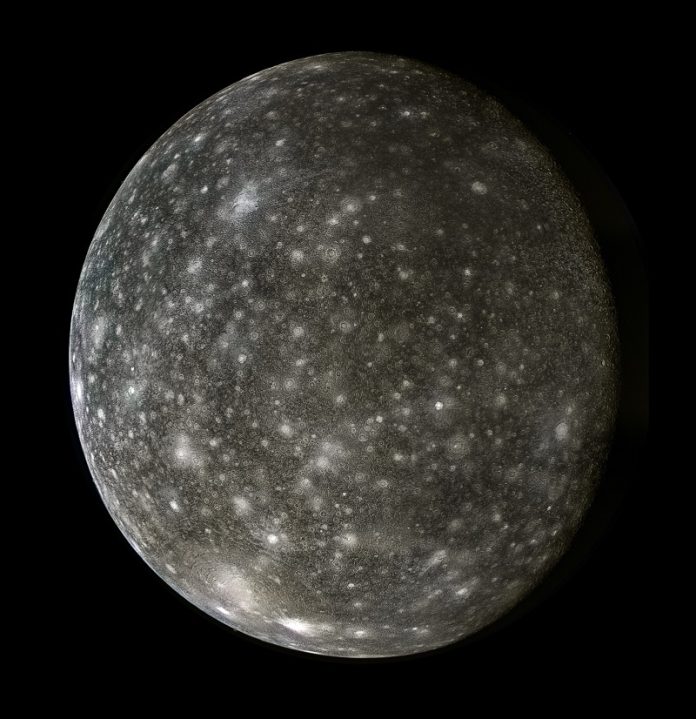
Callisto, one of Jupiter’s largest moons, looks like a boring, crater-filled world.
It doesn’t seem to have much going on compared to some of Jupiter’s other moons, like Europa.
However, in the 1990s, NASA’s Galileo spacecraft found something surprising: Callisto might have a hidden ocean beneath its icy surface.
Scientists detected strange magnetic signals near Callisto, hinting that a salty ocean could be buried under its ice shell.
But there was a problem—Callisto also has a powerful ionosphere, a charged layer of gas around it.
This ionosphere could be creating similar magnetic signals, making it hard to know for sure if an ocean exists.
Now, a new study by Cochrane and colleagues has taken a fresh look at Galileo’s data.
Instead of using only part of the spacecraft’s information, they analyzed all eight close flybys of Callisto.
With better statistical tools and computer models, they studied the moon’s ionosphere and interior structure.
Their results strongly suggest that Callisto does, in fact, have a massive underground ocean.
The scientists found that the ionosphere alone cannot explain the strange magnetic signals. But when they included the idea of a subsurface ocean in their calculations, everything made sense.
Their models suggest that Callisto’s ocean could be at least tens of kilometers deep, hidden under an icy shell that might be anywhere from a few dozen to hundreds of kilometers thick. Below the ocean, the moon likely has a rocky core.
This discovery is exciting because if Callisto has a vast ocean, it could potentially support some form of life, just like other ocean worlds such as Europa and Saturn’s moon Enceladus.
More data is needed to confirm the ocean’s existence, but the good news is that several upcoming space missions will investigate further. NASA’s Europa Clipper and the European Space Agency’s JUICE (Jupiter Icy Moons Explorer) will collect new data about Jupiter’s moons, and China’s Tianwen-4 mission might also observe Callisto.
These future missions could finally confirm that Callisto is an ocean world, making it even more fascinating than we once thought. If proven, it would add another intriguing destination to the list of places in our solar system that might harbor hidden oceans—and possibly, even life.
Source: KSR.



